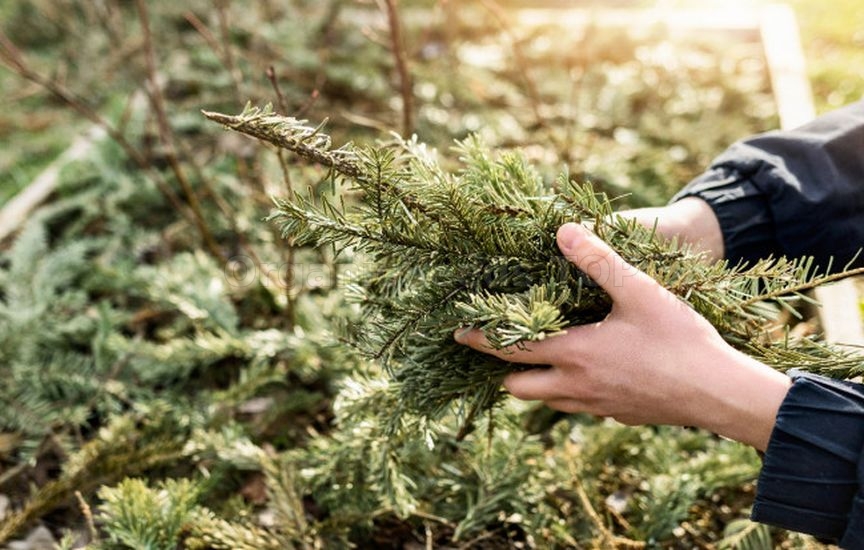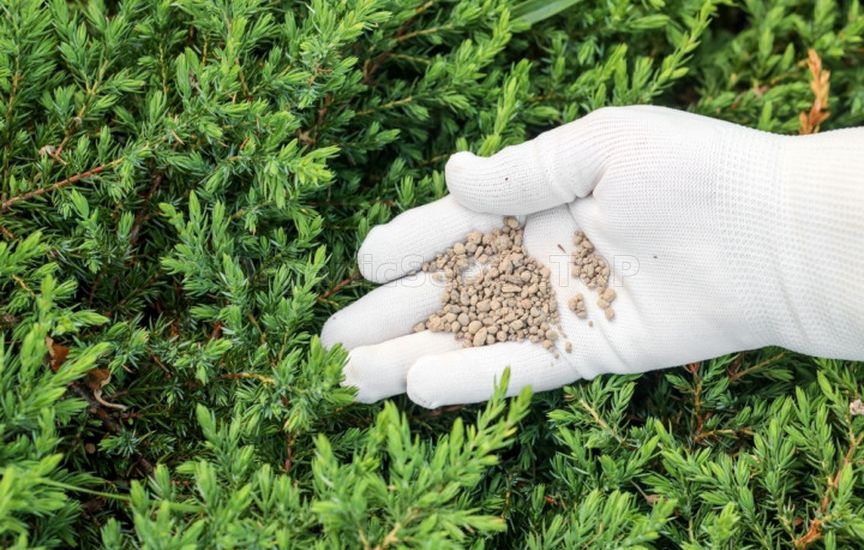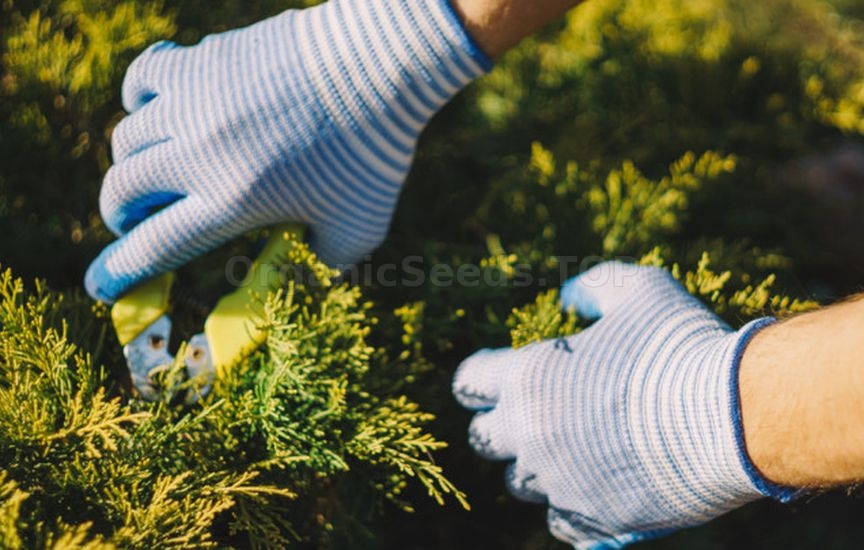Autumn care for coniferous plants |
Coniferous plants are the decoration of any garden. Their evergreen needles delight the eye even on the gloomiest winter days when everything around is fast asleep. However, even hardy and unpretentious thujas, pines, spruces, and other conifers need care.
 Autumn care for conifers is aimed at strengthening immunity and helps them maintain health and decorative appearance, as well as increases resistance to winter stress. Let’s look at the main stages of autumn care for coniferous plants. Moisture-charging watering of coniferous plants The first and most important point of autumn care for coniferous plants is proper watering. Despite the fact that autumn is often associated with rains, natural moisture is often insufficient for the full preparation of conifers for winter. It is important to remember that vegetative processes in these plants, although slowed down, persist even in winter. The main enemy of conifers in winter is not frost, as many think, but drought. It occurs on sunny but frosty days when the needles, under the influence of wind and sun, begin to evaporate moisture, and the roots, located in frozen soil, cannot replenish these losses. As a result, the plant dries out, acquiring a brown, lifeless appearance. It is precisely to prevent this situation that moisture-charging watering is carried out in autumn. Its goal is to deeply and thoroughly saturate the soil with moisture so that the roots can store it for future use. It should be carried out in October or November, when the daytime air temperature does not exceed 7–9°C, but before the onset of frost. The watering rate depends on the weather (whether autumn was dry or it rained from time to time) and the age of the tree. Thus, in dry weather, an adult, large tree such as a pine or spruce may require up to eight 10-liter buckets of water. For young trees planted this or last year, three to four buckets will be enough. The key principle is that water should penetrate deep into the soil, to a depth of at least 50–60 cm. It is better to water in several stages so that the moisture is evenly absorbed and distributed in the root-inhabited layer of soil. Well-watered soil freezes much more slowly, which gives the roots additional time to prepare for the cold. Autumn fertilization of conifers In autumn, coniferous plants need not only watering but also additional nutrition. The main goal of autumn fertilization of conifers is to strengthen the root system and help the shoots fully lignify. For this, plants need phosphorus and potassium. Phosphorus promotes the development of strong roots, and potassium increases the winter hardiness of plant tissues, their resistance to diseases and adverse weather conditions. But nitrogen fertilizers, which stimulate the growth of green mass, should be completely excluded from the autumn "diet", starting from mid-August. Young, immature shoots that begin to grow in autumn will almost certainly die in winter, weakening the entire plant. The ideal solution would be special fertilizers for conifers, marked "autumn" or "fall" on the packaging. Their composition is balanced specifically for the needs of plants during this period. You can also use simple mineral fertilizers (superphosphate, potassium sulfate, monopotassium phosphate, etc.). They should be applied according to the instructions, evenly distributed around the trunk circle with subsequent shallow incorporation into the soil and watering. This procedure is carried out no later than a month before the first frosts and helps conifers obtain the necessary resources for successful wintering. Sanitary pruning Autumn is a great time to tidy up conifers. After the summer season, dry, yellowed, or diseased branches may be found on the plants. All this must be carefully cut out with a sharp pruner to prevent the possible spread of infections and harmful insects. Cuts should preferably be treated with garden pitch or a special antibacterial compound, especially if it concerns large branches. In addition, some coniferous plants, such as thujas or junipers, have such dense crowns that sunlight does not penetrate inside. If you spread the branches, you will see dried needles inside. They also need to be removed so they do not become a breeding ground for fungal infections. This can be done by hand in thick gloves (just run your hand over the needles) or with a garden vacuum. Sanitary pruning and removal of old needles improves air circulation inside the crown, which reduces the risk of fungal diseases. After sanitary pruning and cleaning of conifers, remove all plant debris from under the trees and burn it in a specially equipped place. Protection from diseases and pests Even if the plant looks absolutely healthy, preventive treatment in autumn will not be superfluous. Spores of fungal diseases can overwinter in the soil and on plant residues, and if not destroyed, in spring, with the onset of favorable conditions, fungi will begin their destructive activity. The same happens with pests: during preparation for wintering, many pests (scale insects, false scale insects, hermes, etc.) lay eggs on branches and needles, and in spring, when warmth comes, a new generation of pests emerges from the eggs. To prevent problems in spring, autumn treatment of conifers with special preparations is carried out – fungicides (against diseases) and insectoacaricides (against pests). To protect against fungal diseases, conifers in autumn can be treated with 1% Bordeaux mixture or modern copper-containing preparations. To combat pests, systemic pesticides (such as Aktara), as well as three-component preparations are suitable. They have long-lasting residual effects and work effectively at all stages of insect development. Treatment is best carried out in dry, windless weather. Spraying should be thorough, trying to wet all parts of the plant, including the trunk and soil in the trunk circle. Pay special attention to the lower branches, as pests most often overwinter there and in the trunk circle. Mulching The root system of conifers, especially young specimens, needs protection from sharp temperature fluctuations and severe frosts. The ideal solution is mulching the trunk circle. A layer of mulch will not only help smooth out temperature fluctuations but also retain moisture accumulated after moisture-charging watering. Suitable mulch for conifers includes coniferous bark, wood chips, sawdust, peat, compost, or simply fallen needles. It is undesirable to use straw or hay for mulching – this may attract rodents to the plants. The mulch layer should be sufficiently loose, 5–7 cm thick. An important point: do not pile mulch close to the tree trunk or shrub base. A small gap will allow the bark to breathe and prevent it from rotting during thaws. Winter shelter: protection from sun and snow This stage is especially important for recently planted plants and species that have low winter hardiness. The main goal of sheltering is to protect the plant not so much from frost as from two other dangers: scorching winter sun and heavy clinging snow. To protect against snow, which can break branches, especially in columnar conifers, the crown is carefully tied with twine or special netting, without pulling too tightly. To protect against sunburn, which usually occurs in February–March, plants are shaded. For this, screens made of burlap, agrospan, or special mesh are installed on the sunny side. You can completely cover a small plant with a burlap cover, but it should be loose and breathable. A good option is to throw spruce branches over the plant. Under no circumstances should polyethylene film be used for shelter: it will create a greenhouse effect, leading to needle rot during thaws. Shelter is installed after frosts so that the plant has time to adapt to lower temperatures. It is important to leave small ventilation holes – this will help avoid rotting. Shelter should be removed gradually, with the onset of stable warmth, preferably in cloudy weather, so that the plant gradually gets used to the bright spring sun. Proper and timely autumn care will help conifers survive the harsh winter period without serious problems, and they will delight you with lush and healthy needles from the very early spring. |
|
|
